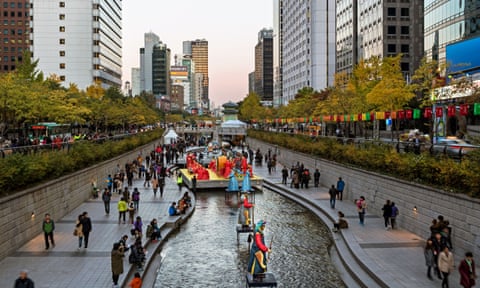The persistent haze over many of our cities is a reminder of the polluted air that we breathe. Over 80% of the world’s urban population is breathing air that fails to meet World Health Organisation guidelines, and an estimated 4.5 million people died prematurely from outdoor air pollution in 2015.
Globally, urban populations are expected to double in the next 40 years. An extra 2 billion people will need new places to live, services and ways to move around their cities. More important, the decisions that we make now about the design of our cities will determine the everyday lives and health of the next generations. So what would the components of a smog-free – or at least low-pollution – city be?
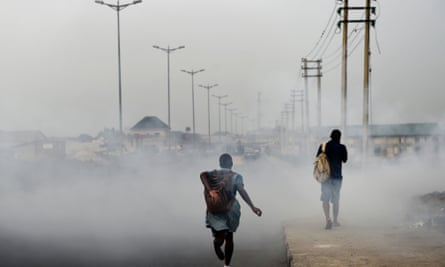



Over 80% of city dwellers around the world are breathing air that fails to meet WHO guidelines.
Eye-catching smog towers that loom over cities, buses that filter the air as they travel along and paints said to “eat” pollution all seem like tempting solutions to our air problems. Ideas such as these that try to clean the air rather than fix the problem may be politically achievable, but they founder on a point of physics: there is simply too much air to clean. Remarking on the towering filters being installed alongside junctions in Delhi, York University’s Ally Lewis, professor of atmospheric chemistry, likened filtering outdoor air to “trying to air-condition a room with the roof off”. It is far better to prevent the air pollution in the first place.
Building our smog-free city
As the cities of the future are built in and around those that exist today, demolition and construction will inevitably create air pollution – but small changes in age-old methods can make a huge difference. Explosives and wrecking balls can be replaced by machines that slowly nibble away at the concrete and mist canyons that suppress dust at source. In a world first, in 2015 London created two low-emission zones in the central city, meaning only the most modern and low-polluting diggers and cranes can be used there.

An end to petrol and diesel?
Traffic has become synonymous with air pollution, and many countries intend to ban the sale of new petrol and diesel cars in the next two decades. But simply switching to electric cars will not mean pollution-free cities. The level of emissions they cause will depend on how the electricity to run them is generated, while brakes, tyres and roads all create tiny airborne particles as they wear out.
We can do better than simply switching fossil fuel-powered cars for battery, electric or hydrogen vehicles by prioritising more active forms of transport – a change that is already under way.
Across the developed world, car use is in decline as more people move to city centres, while young people especially are opting for other means of travel. Researchers are already asking if we have reached “peak car”, but transport planners have yet to catch up with this trend, instead laying new tarmac to tackle congestion.
But as users of London’s orbital M25 motorway will know, new roads rapidly fill with more traffic. In the US, studies have shown that doubling the size of a road can simply double the traffic, taking us back to square one.
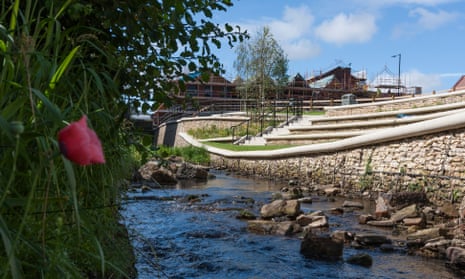
Turning roads into parks
Fortunately the opposite happens too: motorists adapt when roads are taken away. Between 1973 and 2003, a 6km, four-lane elevated expressway took 170,000 vehicles per day into the heart of Seoul in South Korea. It was frequently congested. Instead of building more lanes, city authorities demolished the whole thing. Sceptics predicted chaos, but traffic in the centre decreased. The residents of Seoul adapted, many swapping to the subway.
Part of the vision behind the move was to restore the lost Cheonggyecheon river, long buried under the road. The former congested expressway is now a long riverside park with 1.5m trees. Wildlife has returned, and it is a hugely popular place for residents as well as tourists, with thriving businesses, a festival venue and a cycle route.
Buried rivers have also been restored in Seattle, New York and Sheffield (above). But we need to go further by expanding on today’s low-pollution walking routes, cycle lanes and “quiet ways”, creating traffic-free areas with green corridors that radiate away from the centres and business districts.

The right transport
Cycle-share schemes are proliferating throughout the world. Pioneered in in Lyon in 2005, the idea spread quickly to Stockholm, Seville, Paris, Montreal, Mexico City, London and many others. Though cyclists breathe more polluted air in cities than people in cars and have a greater risk of accidents, the benefits of such schemes still far outweigh the harm.
Travel to Barcelona and you cannot fail to see the distinctive red and white Bicing bikes, popular with tourists and locals alike. Just two years after the scheme started in 2007, nearly 40,000 bike trips were being made per day.
Audrey de Nazelle was part of a team that studied the pros and cons and found the health benefit of using the bikes was 77 times greater than the increased risk of accident and inhalation of pollution.
But you don’t need to cycle to see these gains: walking is nearly as good.
With a quarter of car trips in England being for under than two miles, there is a massive potential for people to increase their active travel. “Active travel is the best solution, because you can get the most bang for your buck,” says De Nazelle, now at Imperial College London. “In studies comparing health benefits from technological approaches to reduce air pollution with walk/bike scenarios, we find 30 times greater benefits from physical activity.”
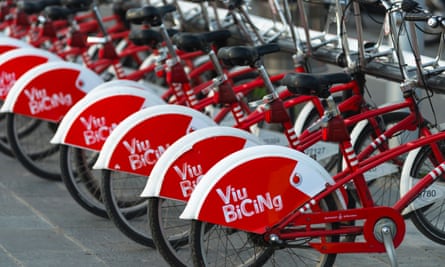
Reducing our dependence on road transport gives a quadruple benefit, improving our health, tackling air and noise pollution and reducing emissions. Our smog free-city therefore needs to be designed to reduce the need to travel for work and everyday essentials, and to make walking, cycling and taking electrically powered public transport the easiest options for getting about.
The good news is that it is already happening. Dutch cities did not become cycling utopias by accident: city leaders set out to reverse the seemingly inexorable rise in cars on their streets by promoting cycling and creating the infrastructure to support it.
Increasingly, other places are following suit. Between 1990 and 2015, cycling increased more than sixfold in Seville, Bogotá, Buenos Aires and Portland, Oregon. In Paris, London and Vienna it tripled. In 2016, the bicycle became the dominant rush-hour vehicle in the City of London, the stomping ground of traditionally conservative bankers and financiers.
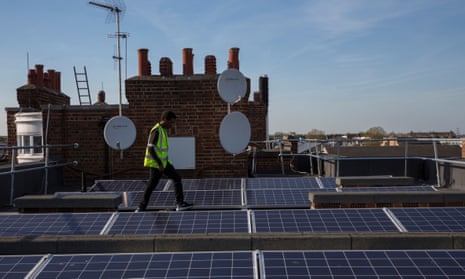
Heating our homes
Wherever people burn solid fuel at home, there are problems with air pollution. This is especially the case across Africa and Asia, but wood smoke also causes problems for cities in New Zealand, southern Australia and the western US and Canada. Polish towns struggle with coal smoke. In London, despite the lessons of the Great Smog in the 1950s, when around 10,000 people died, the air is once again being polluted by solid fuel. In Dublin, peat- and wood-burning in just 12% of homes is now responsible for 70% of the particle pollution emitted.
When wood-burning reached nearly 40% of Montreal’s particle emissions, the city’s government acted to ban all but the newest stoves. However, even the cleanest wood-burners, such as those that meet new European Ecodesign standards, will emit as much particle pollution during a period of use as six modern lorrieswould driving for the same amount of time. So, though upgrading stoves can help, it is only by converting homes to non-solid-fuel heating systems such as gas boilers or heat pumps that real progress can be made in cleaning city air.
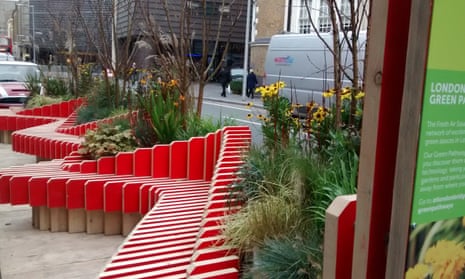
Businesses must pitch in
Poorly controlled industry was one of the main sources of the air pollution that caused almost 1 million premature deaths in China in 2012. The image of smoke pouring from factory chimneys is a familiar one, but heating of offices and shops also causes air pollution. Business is starting to recognise the problem.
“There is a tremendous desire among firms for improved air quality, both for the health of their workforce and in terms of recruitment,” says Ruth Calderwood, air quality manager of the City of London Corporation. “People increasingly want to work for companies that put their environmental impact at the top of the agenda.”
Businesses are therefore working together to make the streets better for their customers and employees to walk and cycle in.

A cargo bike delivery scheme has been launched to help businesses in central London tackle air pollution by shifting deliveries away from diesel vans. Photograph: City of London
Businesses close to London’s Tower Bridge created a modular micro-park that could be installed in a parking space for a week, or a year. The Fresh Air Square introduced flowers and colours into a concrete and brick streetscape, providing pedestrians with a green and welcoming enclave and showing how London’s roads could be repurposed.
The impact of business goes further. Diesel lorries are excluded for now from government plans to end the sale of new petrol and diesel vehicles, but in the long term, businesses will need to reconsider their delivery systems. Although rail freight works well for long distances, urban deliveries remain a challenge. At the moment, competing delivery vehicles criss-cross our cities and are often largely empty. Almost 40% of vans in London are less than a quarter full.
The smog-free city of the future needs to manage deliveries just as it needs integrated public transport. Already, some retailers are using shared delivery points and last-mile distribution with bikes or electric vehicles, while European cities are using their tram networks for freight, including CarGoTram, which delivers parts to Volkswagen’s factory in Dresden.
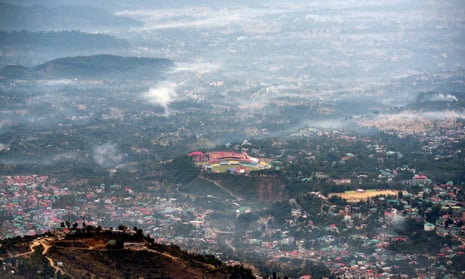
The neighbours also need to help
But pollutants can stay in the air for many days, which means creating a smog-free environment is not just a challenge for individual cities. The air Londoners breathe today might have been in Paris yesterday and could be in Amsterdam tomorrow.
The countryside in between also adds to the pollution burden. Agricultural burning was a main factor in the Delhi smogs in 2017, and fires to clear peatlands for palm oil cause smogs that envelope Indonesia and Singapore. Ammonia from fertiliser and farming is a major ingredient in many city smogs, especially in the springtime smogs that plague western Europe and many other parts of the world. Fertiliser is expensive, and ammonia in the air is wasted money. Agricultural science is helping farmers to use the right fertiliser at the right time, and new technologies can inject chemicals into the soil rather than spraying them.
Our smog-free city would have to work with its neighbouring cities and surrounding farmers to protect the air we all share.
Gary Fuller is an air pollution scientist at King’s College London. His book The Invisible Killer: The Rising Global Threat of Air Pollution – and How We Can Fight Back is published this month by Melville House
Follow Guardian Cities on Twitter, Facebook and Instagram to join the discussion, and explore our archive here
